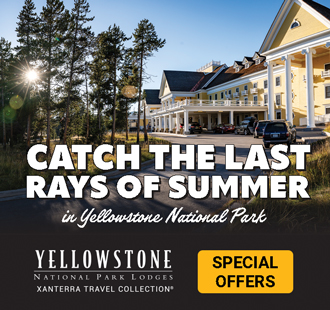By Bella Butler EBS STAFF
MANHATTAN – Eleven miles west of bustling Four Corners, Mel Visser surveys a portion of his 779-acre farm from his front stoop. Dozens of horses graze on the green bounty of the land, and a shift in the breeze flushes a flock of birds from a patch of wild lupine along a creek.
“I love the open space,” he says, admiring the life playing out before him. “Except for them damn houses out there.”
Miles beyond his rolling hills, a cluster of rooftops poke up from the horizon, a constant visual reminder for Mel of the sprawling development creeping ever closer to his family’s farm. His father purchased the land in the 1940s; it’s where Mel was born and raised, and it’s where he hopes to live the rest of his life. But fast-paced urbanization is an imposing threat on this wish.
On June 3, Mel and his wife, Marge, finalized a conservation easement on their property with the help of the Gallatin Valley Land Trust. The conservation project, which began as mere discussion three years ago, aims to protect the Vissers’ property from fragmentation and development to ensure that the highly productive land can remain viable for agriculture and to safeguard migration corridors and habitats for wildlife.
“[GVLT is] just trying to keep working lands in the hands of farmers, and it’s getting tougher by the day with the value of land creeping up…” said one of GVLT’s lands project managers Chad Klinkenborg. “It’s definitely been a priority for us to protect those critical [agricultural] properties that contain highly productive soils, and this particular project was no exception to that.” According to Klinkenborg, the Vissers’ land is roughly 80 percent of what the National Resources Conservation Service designates as prime soil.
Mel said in 1992 inflated fuel and fertilizer prices forced him to shift away from grain farming and find another way to draw an income from his land. It was then that he struck a deal with Jake’s Horses, an outfitting company near Big Sky. When the snow blows in and the temperatures drop, 20-80 horses from Jake’s take refuge on Mel’s land, their winter pasture.
Although 78-year-old Mel has no immediate interest in returning to laborious grain and hog farming, the conservation of his rich piece of dirt will allow for the continuation of the winter pasture that’s served as Marge’s and his main source of livelihood for years.

This particular conservation easement contains stipulations that satisfy three primary goals: The Visser land cannot be fragmented; it cannot be developed; and it cannot be used for non-agricultural commercial purposes. The easement is also tied to the deed, so the protections are in perpetuity.
As much of the surrounding landscape adopts a new form as a platform for homes and commercial structures, Mel is happy to have the assurance that his beloved land will not host “the rat race” that he looks upon with disdain. “You’ll carry me off of here before I move to town,” he said emphatically.
“We’re losing our rural Montana. It’s not the good ol’ West anymore. It’s too urbanized.” He laments the loss of a quiet vastness that many new residents of Gallatin Valley may never know.
The Vissers’ conservation easement isn’t the land trust’s first endeavor in the area. In the Churchill/Amsterdam region, GVLT has worked with 23 landowners to successfully conserve 9,700 acres. Klinkenborg estimated that of GVLT’s projects in the area, 90 percent are on generational farms.
“Conservation easements are a way to help families keep their properties in [agriculture] and pass their land onto the next generation—their next generation—so they can continue to farm and utilize [agriculture] as a sustainable source of livelihood.”
All four of Mel and Marge’s kids were born and raised on the farm, and Mel hopes the land that was passed onto him can one day rest in the hands of one of his children. Kevin, their youngest son, lives on the property and does most of the heavy lifting nowadays. He knows one day the farm will be his responsibility, and he’s more than content with that fate. He shares in his father’s deep admiration for the quilted patchwork of fields and fences, farmstead buildings and interminable sky. “This is my paradise too,” he said.
Another interest that warranted the easement is the surrounding wildlife. Roughly five years ago, the Vissers observed a herd of 300-400 elk travel from Ted Turner’s neighboring Flying D Ranch across their land to what locals know as “The Bench,” a plateau just beyond the Visser property. It’s a wonder Mel said he never saw growing up, but he’s enjoyed watching the herd’s migration ever since.
Mel and Kevin hypothesize that the wolves that have moved onto the Flying D Ranch are what have pushed the elk up their way, and Kevin adds that because the land is no longer used for farming, which leaves the ground mostly bare in the winter, the year-round pasture likely resembles a buffet for the herd.
In addition to the elk herd, the native grasslands planted by Mel decades ago serve as prime habitat for upland bird species, raptors and mule deer—all residents of the land the easement seeks to protect.
The cost of the easement—equivalent to the value of the property’s development rights, was funded by a trio of sources: The Gallatin County Open Lands levy, which voters approved in 2018, the NRCS Agricultural Conservation Easement Program and the Vissers themselves, who accepted only a portion of the dollars and relinquished the remainder as a charitable contribution.

According to reporting by Time in November 2019, Chapter 12 farm bankruptcies were up 50 percent in the Northwest from mid-2018 to mid-2019, and between 2011 and 2018, the U.S. lost more than 100,000 farms. The decline of America’s quintessential small family farms has come to dominate the nation’s narrative in recent years.
Conservation easements, like that acquired by the Vissers, put money or tax incentives in the hands of farmers and ensure that they’ll never have to see development wash out the land they’ve worked on an been a part of for generations.
Following the finalization of the easement, Mel is able to get out of debt, pay his bills and look toward retirement. The threat of being forced to “sell out,” as he’s seen too many neighbors do over the years, is squelched, and he can take comfort in the fact his children and their children will know the land as it was, not from stories and old photos but from seeing it with their own eyes.
The expanse of earth that Mel looks across from his stoop, the nooks and crannies he used to explore as a kid, the land he’s come to know so intimately, will forever remain as he sees it now, unfragmented and undeveloped; a treasured piece of the “good ol’ West” he remembers.














